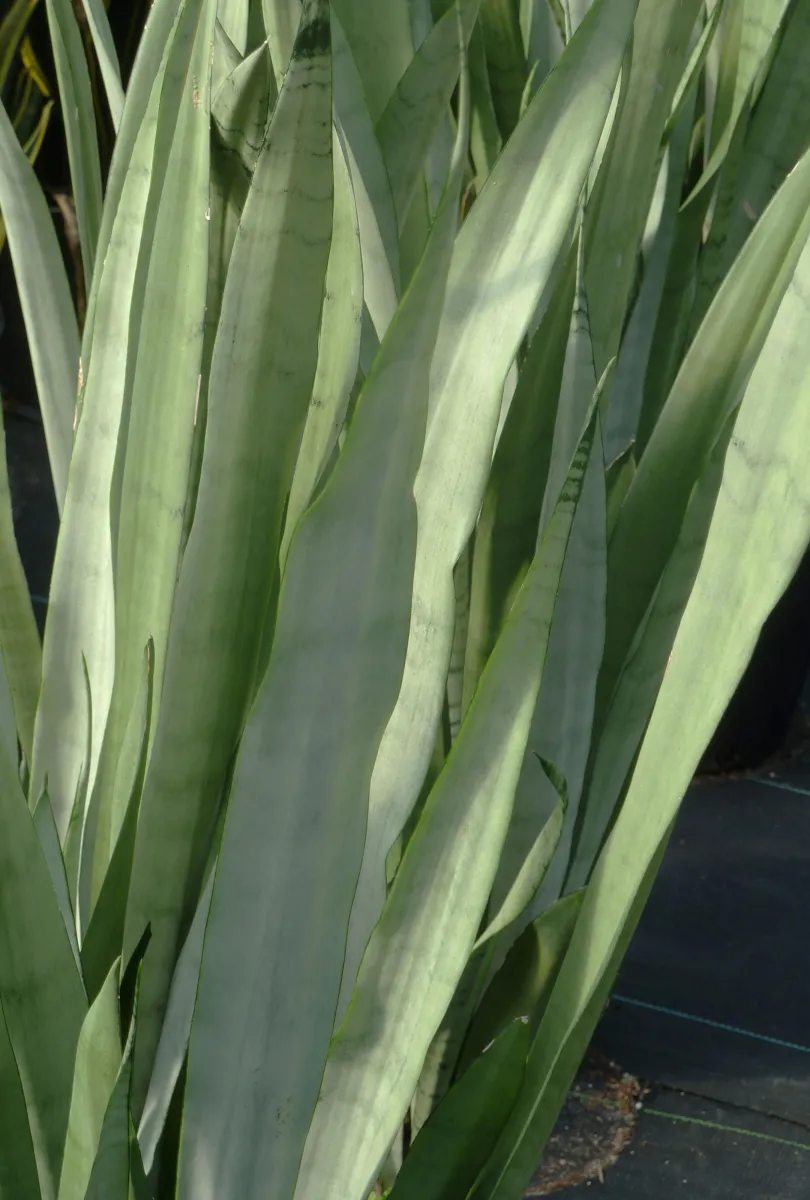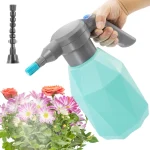Thinking about bringing snake plants outdoors to elevate your garden? You’re in for a treat! At Aura, we’re passionate about making your outdoor space vibrant and hassle-free with low-maintenance plants like the snake plant. Known for their striking, sword-like leaves and air-purifying powers, snake plants are perfect for patios, gardens, or balconies. Drawing from real gardening experience, this guide shares expert tips on growing snake plants outdoors, from ideal conditions to common pitfalls. Ready to transform your space with these tropical beauties? Let’s dive in!
Why Choose Snake Plants for Your Outdoor Garden
Snake plants, also known as Sansevieria or mother-in-law’s tongue, are a fantastic choice for your outdoor garden. They’re tough, low-maintenance, and look great in almost any setting. If you’re looking for a plant that adds style without demanding constant care, snake plants are a smart pick.
Unique Benefits of Snake Plants Outdoors
- Drought Tolerant: Snake plants can handle dry spells, making them perfect for U.S. regions with hot, dry summers.
- Air Purifying: They help clean the air, creating a fresher outdoor space.
- Pest Resistant: These plants don’t invite many pests, reducing the need for pesticides.
- Year-Round Greenery: Their striking upright leaves stay vibrant all year, adding color even in cooler months.
Aesthetic and Practical Uses
Snake plants bring strong architectural lines to patios, garden beds, or containers. Their sharp, sword-like leaves create a modern look that contrasts well with softer flowers or tropical plants for patios. You can use them as a natural divider, border, or accent plant. Plus, since they thrive in pots, they work great for decorating porches or entryways.
If you want a low-maintenance, durable outdoor plant that looks good and performs well in various U.S. climates, snake plants are a solid choice for your garden setup. For ideas on pairing them with other outdoor greenery, check out our guide on artificial outdoor palm plants for easy tropical vibes year-round.
Ideal Conditions for Growing Snake Plants Outdoors
Climate and Hardiness Zones
Snake plants (Sansevieria or Dracaena trifasciata) thrive best in USDA hardiness zones 9 to 11. This means they do well in warm climates without frost. If you live in cooler areas, keep them in pots so you can bring them inside during cold months. They handle heat well and can tolerate some dry spells, making them great for outdoor spaces in the southern and southwestern US.
Light Requirements
Outdoor snake plants love bright, indirect sunlight. Too much direct sun, especially in hot afternoon hours, can cause leaf burn. A spot with morning sun and afternoon shade works perfectly. If you place them in full shade, their growth might slow down, and the leaves could lose some of their vibrant color.
Soil and Potting Needs
For snake plant care outdoors, well-draining soil is a must. Use sandy or cactus mix soil to avoid waterlogging, which can lead to root rot. If planting in the ground, make sure the soil doesn’t stay soggy. When using pots, pick containers with good drainage holes. Adding some gravel or small stones at the bottom of the pot can improve drainage and keep your snake plant happy.
How to Care for Snake Plants Outdoors
Taking care of snake plants outdoors is pretty simple if you follow a few key steps. Here’s how to keep your Sansevieria healthy and thriving outside.
Watering Tips
- Snake plants don’t like to be overwatered. Let the soil dry out completely between watering.
- In warmer months, water every 2-3 weeks; reduce watering in cooler months.
- Avoid water pooling around the base to prevent root rot, a common problem with outdoor snake plants.
Fertilizing and Maintenance
- Use a balanced, slow-release fertilizer once during the growing season (spring to summer).
- You can also feed monthly with a diluted liquid fertilizer if the plant looks like it needs a boost.
- Remove any dead or damaged leaves to keep the plant neat and healthy.
Protecting from Weather and Pests
- Snake plants prefer warm weather but can suffer if exposed to frost or freezing temperatures, so bring them inside or provide cover when temps drop below 50°F.
- Provide some shade during the hottest afternoon sun to prevent leaf burn.
- Watch for pests like spider mites and mealybugs. Treat infestations early with insecticidal soap or neem oil.
Following these tips will keep your outdoor snake plants strong and looking great no matter where you place them in your garden or patio.
Propagating Snake Plants Outdoors
Growing your snake plant outdoors is even more rewarding when you propagate new plants yourself. Two simple methods work best: division and leaf cuttings.
Division Method
- Carefully dig up the snake plant from the soil or pot.
- Gently separate the root clumps or rhizomes—each section should have roots and leaves.
- Plant each division in well-draining soil outdoors, giving them enough space to grow.
- Water lightly and keep them in bright, indirect sunlight until established.
This is the fastest way to get healthy new plants because each division already has a strong root system.
Leaf Cuttings
- Pick a healthy leaf and cut it near the base into 3–4 inch sections.
- Let the cut pieces dry for a couple of days so the cut ends callous over.
- Insert the bottom end of each piece into moist soil outdoors.
- Keep the soil slightly moist and place the cuttings in indirect sunlight.
- It can take several weeks for roots and new shoots to develop.
Leaf cuttings take longer, but it’s a great way to multiply your snake plant without disturbing the main one.
Both methods are perfect for growing Sansevieria outside and giving your garden fresh life with very little effort.
Common Challenges and How to Avoid Them
Growing snake plants outdoors comes with a few challenges, but you can easily handle them if you know what to watch for.
Preventing Invasiveness
Snake plants (Sansevieria) can spread quickly, especially in warm climates. To keep them from taking over your garden:
- Plant in pots or contained beds.
- Remove any offshoots or runners that start growing away from the main plant.
- Regularly check your outdoor space to catch new growth early.
Managing Overwatering and Root Rot
Snake plants hate sitting in soggy soil, which leads to root rot—a common problem outdoors. To avoid this:
- Water only when the soil feels dry to the touch, roughly every 2 to 3 weeks depending on your weather.
- Make sure your soil or potting mix drains well.
- Avoid watering if rain is frequent or heavy.
Pet and Child Safety
If you have pets or kids, keep in mind that snake plants are mildly toxic if chewed or eaten. To keep everyone safe:
- Place snake plants in areas out of reach.
- Educate children about not touching or eating plants.
- Consider using alternative non-toxic plants if your kids or pets are very curious.
Being aware of these challenges can help you enjoy the beauty and ease of snake plants outdoors without trouble.
Transitioning Snake Plants from Indoors to Outdoors
Moving your snake plant from inside to outside takes a bit of care to avoid shock. Start by placing it in a shaded outdoor spot for a few hours each day. Gradually increase the time and the amount of sunlight it gets over one to two weeks. This helps the snake plant adjust to the different light and temperature without stressing it.
When bringing snake plants back indoors for colder months, reverse the process. Move the plant to a shaded area outdoors or a bright but indirect spot inside before fully bringing it in. This prevents sudden changes that can cause leaf damage or slow growth.
Key Tips for Transitioning:
- Start with limited sun exposure, increasing it slowly
- Avoid placing the plant in direct, harsh afternoon sunlight at first
- Watch for signs of sunburn or stress (yellowing or curling leaves)
- Bring plants indoors before temperatures dip below 50°F
- Give the plant a gradual adjustment period each season
This simple routine helps your snake plant stay healthy whether outside on your patio or safely inside during colder months.
Aura’s Recommended Products for Outdoor Snake Plants
Choosing the right gear can make growing snake plants outdoors a lot easier. Here are some of Aura’s top picks to help your mother-in-law’s tongue thrive outside.
Best Planters and Pots for Outdoor Snake Plants
- Durable Materials: Look for pots made from weather-resistant materials like ceramic, terracotta, or heavy-duty plastic. These hold up well to sun, wind, and rain.
- Proper Drainage: Make sure the planter has drainage holes to prevent water from pooling around the roots, avoiding root rot.
- Size Tips: Pick a pot that’s just a bit larger than the plant’s root ball—snake plants don’t like overly big containers, which can trap moisture.
Soil and Fertilizer Picks
- Well-Draining Soil: Use a cactus or succulent soil mix outdoors to keep the roots dry and healthy. Mixing in some sand or perlite also helps with drainage.
- Slow-Release Fertilizer: Choose a balanced, slow-release fertilizer to feed your snake plant during the growing season without overwhelming it.
- Organic Options: If you prefer organic care, compost-based fertilizers work great to keep your outdoor snake plant healthy without synthetic chemicals.
For more ideas on plants that complement snake plants outdoors, like tropical plants for patios, check out our guide on artificial outdoor palm plants to add year-round greenery to your space.
Using these products will give your snake plant the best chance to grow strong and look great in your outdoor garden or patio space.
Frequently Asked Questions
Can snake plants grow well outdoors year-round?
It depends on your climate. Snake plants thrive outdoors in USDA zones 9 to 11, where winters stay mild. In colder areas, it’s best to bring them inside during the winter months.
How much sunlight do outdoor snake plants need?
Snake plants prefer bright, indirect light but can tolerate some direct sun. Too much harsh sun can cause leaf burn, so partial shade is ideal, especially in hot climates.
How often should I water my snake plant outdoors?
Water only when the soil feels dry. Overwatering can lead to root rot. Usually, watering every 2 to 3 weeks is enough unless it’s extremely hot or dry.
Can I plant snake plants directly in the ground?
Yes, if your soil drains well. Snake plants dislike soggy conditions, so make sure the ground has good drainage or use raised beds or pots.
How do I prevent my outdoor snake plant from becoming invasive?
Keep an eye on its growth. Snake plants spread through rhizomes, so controlling their spread by trimming and dividing plants helps prevent invasiveness.
Are snake plants safe for pets and children?
Snake plants contain saponins, which can be mildly toxic if ingested. It’s best to keep them out of reach from pets and kids who might chew on the leaves.
Can I propagate my outdoor snake plant easily?
Yes! You can split mature plants by dividing the root ball or grow new plants from leaf cuttings. Both methods work well outdoors with proper care.
What soil mix works best for growing snake plants outside?
A well-draining mix with sand or perlite is ideal. Avoid heavy soils that retain too much water to prevent root problems.
Should I fertilize my snake plant outdoors?
Fertilize sparingly during the growing season (spring and summer) using a balanced, diluted houseplant fertilizer for best results. Too much fertilizer can harm your plant.
For more tips on snake plant care outdoors and the best ways to keep your plants healthy, check our other guides or contact local plant experts.









